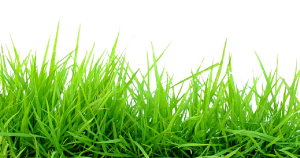YOUR HOME - EXTERIOR LOOKS
Considering Removing Your Lawn?
Here's How to Determine the Grass You Should Keep
October, 2014 - Issue #120
 Courtesy of Shutterstock |
But how can you choose which grass to keep and which to rip out?
Wear & Tear
Turf grass is a plant that Mother Nature designed to take wear and tear. It should be used! Areas in your yard that are subject to play with kids and pets are good candidates for grass. Areas in your landscape that have grass purely for aesthetics are great candidates for removal.
Hard to Water, Mow & Keep Alive
In addition to the "wear and tear" rule, consider these other characteristics of grass that you should consider removing:
• slopes and mounds that are difficult to water and mow
• narrow areas that are hard to irrigate without sprinkler overspray
• heavily-shaded areas where the grass is weak and thin (usually under mature trees)
Your yard probably has some excellent candidate areas for removal in the front yard - and don't forget those narrow strips beside the house or along the driveway and walkway.
Zones
Removing some grass opens up a world of possibilities to reinvent your landscape, but in order to achieve the possible water savings, you must follow one very important rule - when deciding how much grass to remove, you need to use your sprinklers as a guide. The typical yard is divided into a series of zones with a valve assigned to each zone. As each valve opens, a zone in the yard is watered. When removing turf grass, all of the grass in a zone must be removed. Removing part of zone is not going to result in water savings because all of the sprinklers in that zone will still need to operate like the entire zone is grass. The whole idea behind removing grass is being able to reduce the amount of water applied to the area where the grass used to be.
The decision now comes down to how many zones of grass you are going to reinvent.
For more information on CLWA's Lawn Replacement Program, visit www.lawnreplacement.clwa.org. There are requirements and restrictions, so not everyone will qualify. However, even without participating in our program, you can still choose to replace your lawn with SCV-friendly plants to save water!
|
||||||||||||||||||||||||||||





